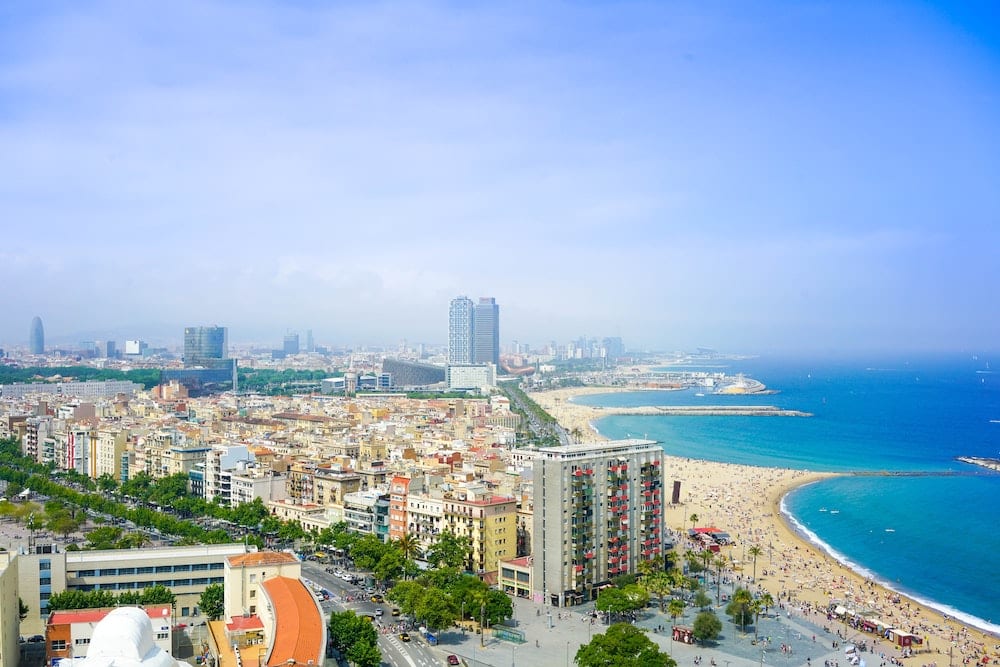
Spanish Prime Minister Pedro Sánchez has announced that the mandatory use of face masks while outdoors will “soon” come to an end, although no date has, as yet, been set for the measure to be lifted.
The 14-day cumulative number of cases per 100,000 inhabitants is now below 100 for the first time in 10 months, as the spread of the virus continues to ease.
This is the first time the incidence rate has fallen below 100 cases since August 12, when it stood at 96. At that time, the second wave of the coronavirus was starting to take shape and transmission rates were rising.
Now the situation in Spain is very different. The fourth wave – which was much smaller than many experts predicted – peaked on April 25, with the 14-day cumulative number of cases per 100,000 inhabitants reaching 235, and since then, the incidence rate has been steadily falling.
The Covid-19 vaccination drive is key to Spain’s falling incidence rate. Almost the entire over-70 population (who accounted for eight in 10 deaths due to Covid-19) has been fully vaccinated.
The over-60s are also on the way to getting full protection, but this process is taking longer as this age group is receiving the Astrazeneca vaccine. Meanwhile, nearly half of the 50-59 age group has been fully vaccinated.
With these high levels of vaccination coverage among the over-50s, the coronavirus is spreading primarily among younger age groups.
According to Fernando Simón, the director of the Health Ministry’s Coordination Center for Health Alerts (CCAES), there is high transmission among youths, which is stopping the global number of cases in Spain from falling more quickly.
However the seriousness of the disease and the mortality rate fall significantly in these age groups.
Covid-19 patients occupy 2.5% of hospital beds – down from 25% at the beginning of February, the highest figure recorded since this data point began to be published (it was not released during the first wave).
Spain’s intensive care units (ICUs) are in a similar situation with the occupancy rate at 10%. It represents a big drop since February, when 45% of ICU beds were occupied by Covid-19 patients.
It is estimated that around 20 daily deaths have been recorded in the past few days – most of the victims are people aged 60 and over who contracted the coronavirus before being fully vaccinated and had been suffering from the disease for weeks. Young patients have also died from Covid-19, but they continue to be the minority.
According to Manuel Franco, the spokesperson for the Spanish Society of Public Health (Sespas), the risk of a rise in cases remains. “A third of the population has still not received both [vaccine] doses, so there is margin for rises to happen,” he said.
Franco also pointed out that the epidemiological situation varies between Spain’s regions, which are responsible for containing the pandemic in their territories as well as the vaccination drive.
While four regions – the Balearic Islands, Valencia, Galicia and Murcia – have an incidence rate below 50 cases (which, among other data points, indicates a situation of low risk), in two – Andalusia and La Rioja – the figure is above the 150-threshold, considered an indicator of high risk, according to the coronavirus alert system.
“I think with these figures we have to assume that we are not all the same and that different measures have to be taken in each place according to their circumstances,” he said.
With respect to a possible rise in cases, Antoni Trilla, professor of preventive medicine at Barcelona University, said that when it comes to the coronavirus pandemic nothing can be “ruled out.”
The expert explained that while it is unlikely a new wave will overwhelm the healthcare system, the incidence rate could rise and fall, meaning coronavirus restrictions will still be needed.




